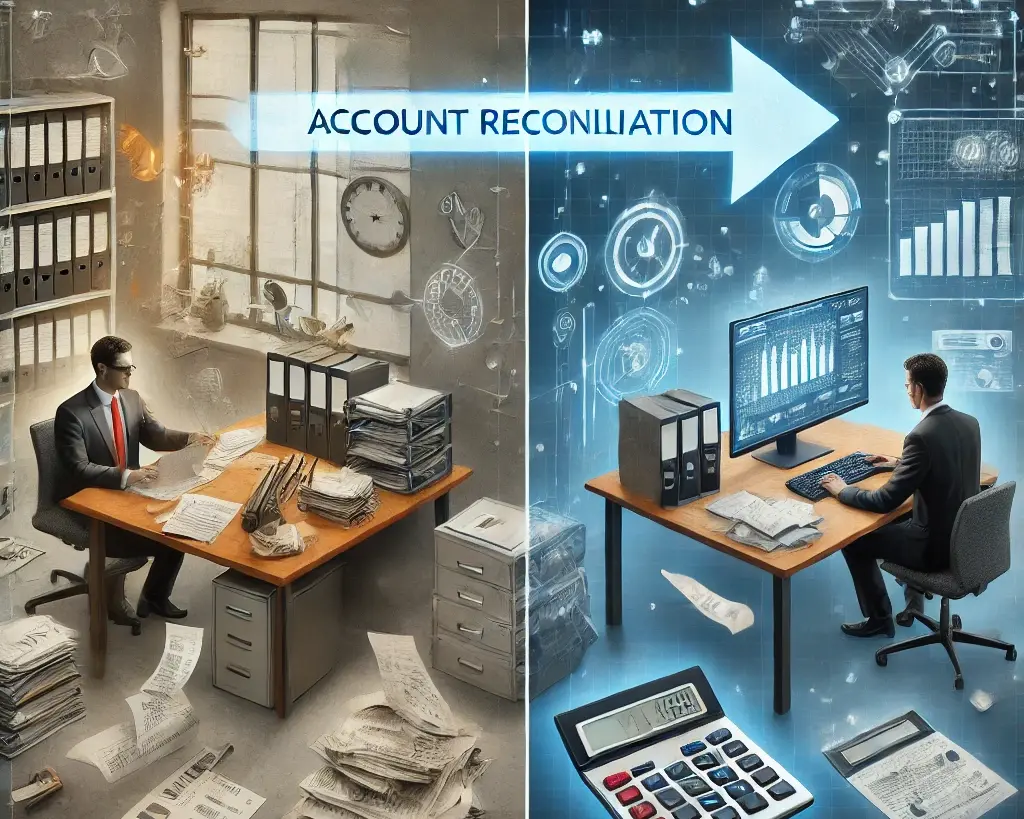The Evolution of Account Reconciliation: From Reactive to Proactive Approaches
Account reconciliation is a crucial part of the R2R process. It is because of regularly performed reconciliations that companies are able to create accurate financial statements. It is, therefore, important for businesses to prioritize account reconciliations throughout the accounting cycle.
As crucial as reconciliation is, it is also noteworthy that it’s a time-consuming and complex process, especially when you take into account enterprises and MNCs. Today, however, we have the technology to automate the process and make things easy for the accountants.
But, how did we get here? The answer is a mixture of advancements that made their way through the finance and accounting industry.

Let’s take a closer look at what the account reconciliation process was in the beginning and how it evolved over time.
How Account Reconciliation Evolved Over the Years
- Manual account reconciliation: As is the case with most processes, reconciliation was also a manual process initially. Accountants used to manually reconcile transactions recorded in the ledgers with external accounts.
The process was, of course, time-and labor-intensive. Moreover, manual reconciliation is an error-prone process, as the chances of miscalculations are high. All of this increased the chances of financial misstatements and fraud.
- Spreadsheet-based Reconciliation: With the advent of digitization, spreadsheets, such as Excel sheets, came into use. Accountants leveraged spreadsheets to manually input data and used formulas to reconcile accounts.
The process definitely was a step up from complete manual reconciliation as the chances of miscalculations were reduced. However, manual data entry was still a tedious and time-consuming task, in addition to being error-prone. Furthermore, spreadsheets were still not the ideal solution to handle large volumes of transactions.
- Early automation: As technology started evolving, the basic automation of tasks came into the picture. This meant the introduction of accounting software with data integration capabilities. Such solutions had the ability to automate reconciliation tasks like data entry and transaction matching.
While this level of automation helped businesses deal with increased transaction volume, its functionality and flexibility was limited. There was a lack of full automation and the availability of real-time data integration and reporting.
- AI/ML-powered automated solutions: The current phase of financial automation is the incorporation of AI/ML-powered solutions, which have the capability to automate 80-90% of the reconciliation process. These automated solutions have enhanced real-time data integration and reporting capabilities, drastically reducing manual efforts and interventions. AI-powered automated financial solutions further provide companies with the ability to handle large volumes of transactions on a daily basis.
The Future of Autonomous Finance
- Blockchain: Blockchain is essentially the next step for CFOs to achieve end-to-end financial autonomy. The technology has immense potential to enhance transparency, streamline processes by removing intermediaries, and increase security when it comes to financial transactions and data.
With the implementation of blockchain technology, companies can further improve financial reporting as the technology provides a single source of truth for all financial data. A key element of this technology is a ‘disrupted ledger’, which allows for more transparency and immutability when it comes to recording transactions.
The unprecedented nature of the business industry especially makes the use of blockchain technology all the more important. Businesses can assess their financial position and dynamically make decisions as their current and future needs change.
- Artificial intelligence: AI is one of the key fundamentals driving the growth of autonomous finance. We’re already seeing AI penetration in processes like R2R, where AI is being used to automate workflows, improve productivity, and increase efficiency.
The next step in terms of utilizing AI’s full potential is for CFOs to increase trust and reliance on the technology for decision-making as well. AI as a technology is continuously growing and adapting to the needs of the users and has the ability to drive strategic decision-making with minimal human intervention when it comes to account reconciliation.
- Cloud: The scope of cloud technology in the finance and accounting industry is immense. It can help companies stop relying on legacy systems by offering a scalable and flexible infrastructure to store and process large volumes of financial data.
While the adoption of cloud computing has increased over the years, the finance sector is still not embracing the technology as much as it should. Companies are reluctant to get rid of on-premise systems and equipment due to their sunk cost.
The move to complete cloud infrastructure can be easily preceded by a combination of on-cloud and on-premise solutions to ease the transition. Doing so will let companies take a step forward towards an autonomous financial model.
Conclusion
Account reconciliation has evolved from being a complete manual process to being an automated process. This evolution has been supported by technological advancements enabling the use of artificial intelligence in the finance industry. Advanced account reconciliation software can seamlessly auto match 90% of transactions and reduce days to reconcile by 30%.
The accounting industry is further on the cusp of incorporating more advanced solutions to achieve 100% account reconciliation automation due to the ongoing evolution of blockchain and cloud computing technologies.
